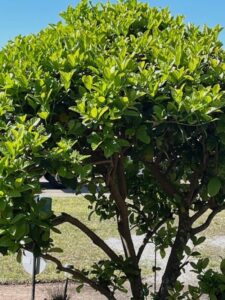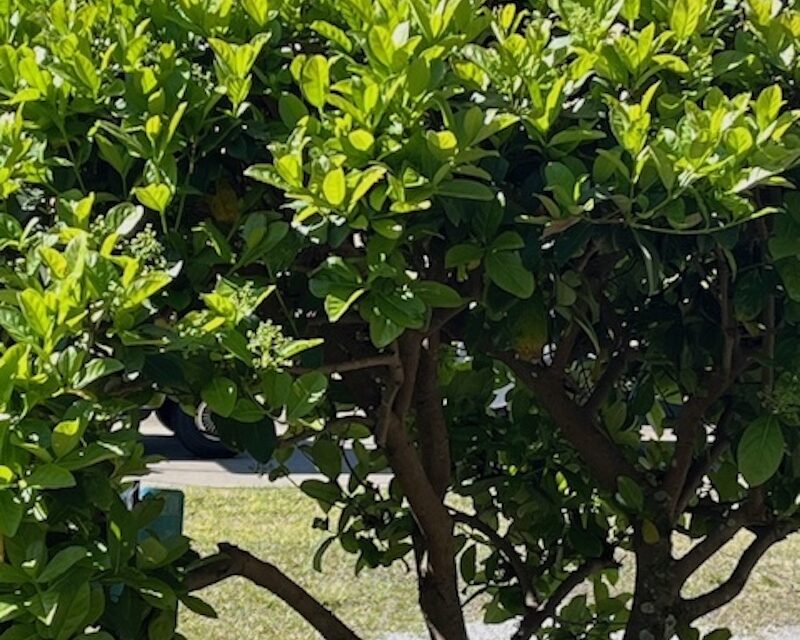
Viburnum
“Good fences make good neighbors” so the saying goes. In fact, fences and barriers have been in yards since the arrival of the Pilgrims. One of the first things that these settlers built in Plymouth were fences to enclose their little bit of land. This seems to be a uniquely English tradition for England is a land of hedges, fences, and walls. We are not as much inclined today, but buffers enclosing our yards are and can be a good thing for multiple reasons.
Rather than fences and walls, buffers of shrubs, plants, and trees can serve several functions as well as being an attractive addition to a landscape. Buffers can be along a marsh or waterway, by a roadside, separating property lines, or blocking out an unwanted view.
Buffers of native plant material along a marsh or waterway can protect against erosion and/or flooding. Buffers can help minimize the amount of pollution from stormwater and irrigation run off from entering our marshes, rivers, and streams. Planting along the water can provide an important habitat for wildlife particularly coastal birds and reptiles as well as a shaded fishspawning area along the shore.
Plantings along a roadside can do many beneficial things. A buffer of shrubs, plants, and trees can reduce noise pollution from road traffic to a level that will enable residents to enjoy outdoor activities as well as open decks and porches. A roadside buffer can also abate pollutants that enter the environment from vehicle exhaust thus protecting the residents of a nearby community. Buffer plantings help to prevent road debris and matter from entering a residential area. Buffer plantings can help to stabilize ecosystems by preventing erosion and separating disparate land uses. For example, a buffer can separate residential living from commercial traffic.
It seems that most people naturally like to have privacy and maintain their own space.Many HOA’s do not permit walls or fences. However, buffers of plants are usually encouraged. You may not wish to see your neighbor’s house, garage, or utility court. Or perhaps your yard abuts commercial property that you wish to block out. Planted buffers can be very effective in blocking out noise, light, and air pollution as well as an unwanted view. Even wind can be a problem in many yards and a thick stand of shrubs can help to abate this.
What to plant in your buffer is dependent upon its location – sun or shade? Moist soil or dry? It is always a good idea, especially along water, to use native plants for wildlife.Our native yaupon holly will grow anywhere and can be pruned to stay small or allowed to grow to its height of 10-20 feet tall and 8-10 feet wide. There are dwarf yaupons so be certain that you know what you are purchasing. Another good native is saw palmetto (Serenoa repens). It is a fire tolerant evergreen member of the palm family that only grows 6-9 feet tall. It is native to the entire coastal lower south and provides a great naturalistic barrier along the marsh. Native grasses such as muhly grass, switch grass, or northern sea oats also provide good erosion preventing qualities.
As a separation between properties or to block out an unwanted view, you cannot go wrong with Sweet Viburnum. (Viburnum odoratissimum) This shrub can grow as tall as 25-30 feet and has thick evergreen leaves. It is misused as a foundation plant because it is inexpensive, lush, and grows quickly, but it is too large to be next to a house. It is far more suitable as a buffer plant due to its size, speed of growth and thick foliage. It is very hardy and can be left on its own with no additional care. Viburnums do best in sun or partial shade.
Podocarpus is also an interesting landscape shrub with evergreen finely textured conifer like leaves. There are tall and short varieties to choose for each location. Again, this is a low maintenance shrub that does best in some sun.
Loropetulum is another shrub that maintains its purple foliage all year long. There are many different sizes and some cultivars can grow into small trees. The thick foliage is an effective barrier to noise, sight, and wind. It also gets pink or red fringe like flowers in the early spring.
Whatever you use as a barrier, be sure that it is not deciduous and will provide leaf coverage throughout the year. The South Carolina Department of Natural Resources has a pdf titled “Backyard Buffers” with all sorts of ideas for your yard as well as lists of native plants, shrubs, and trees. A quick search will take you right to the booklet. Good fences may make good neighbors, but good buffers are better for the environment.









